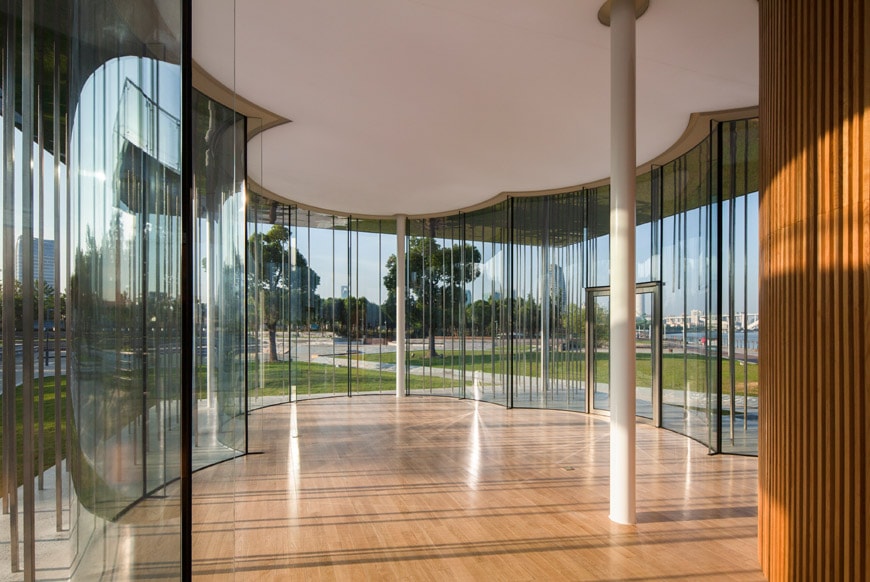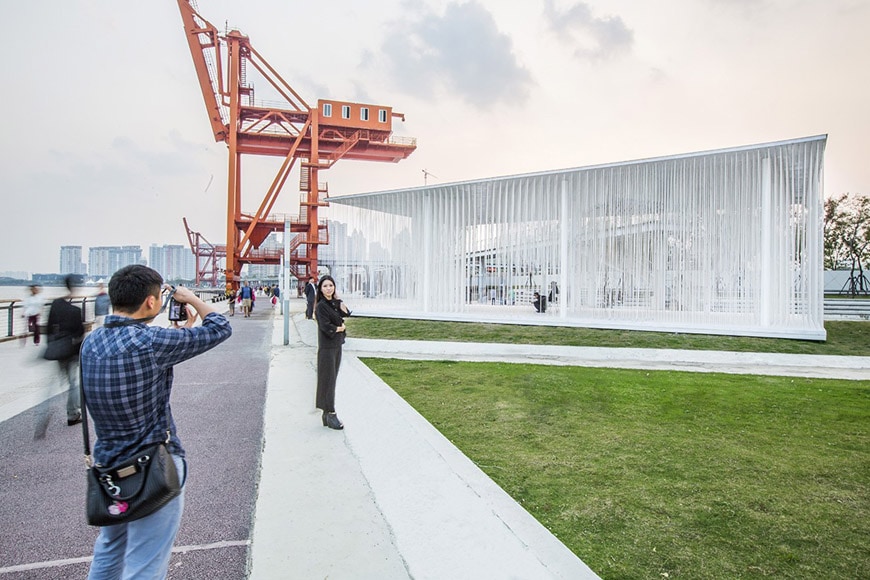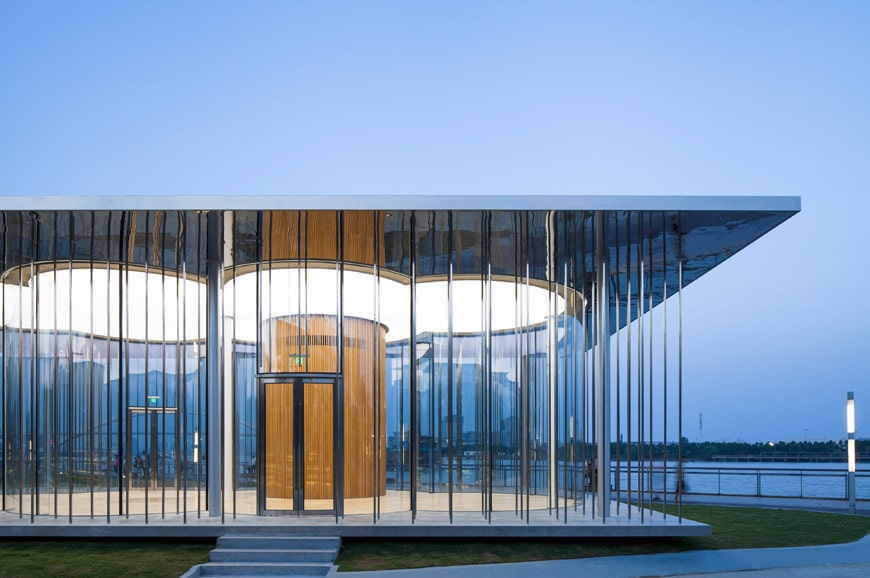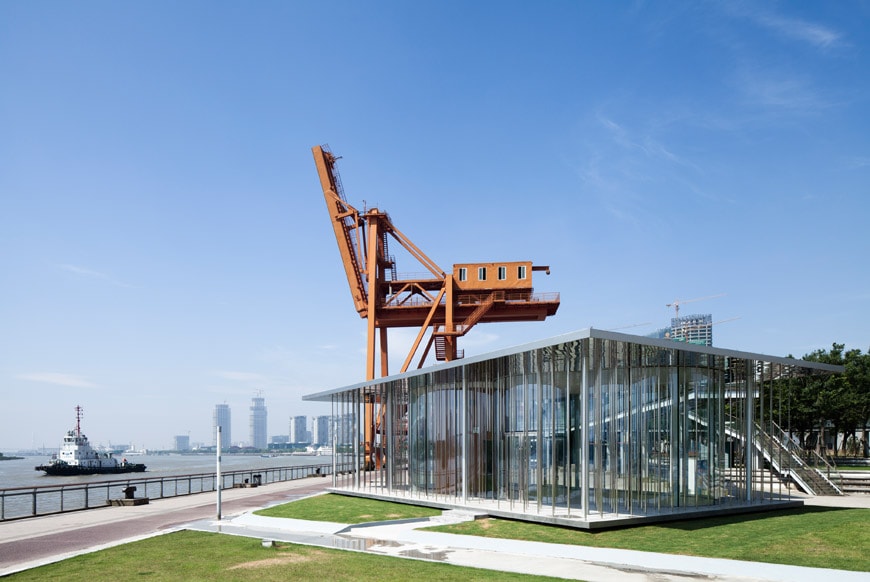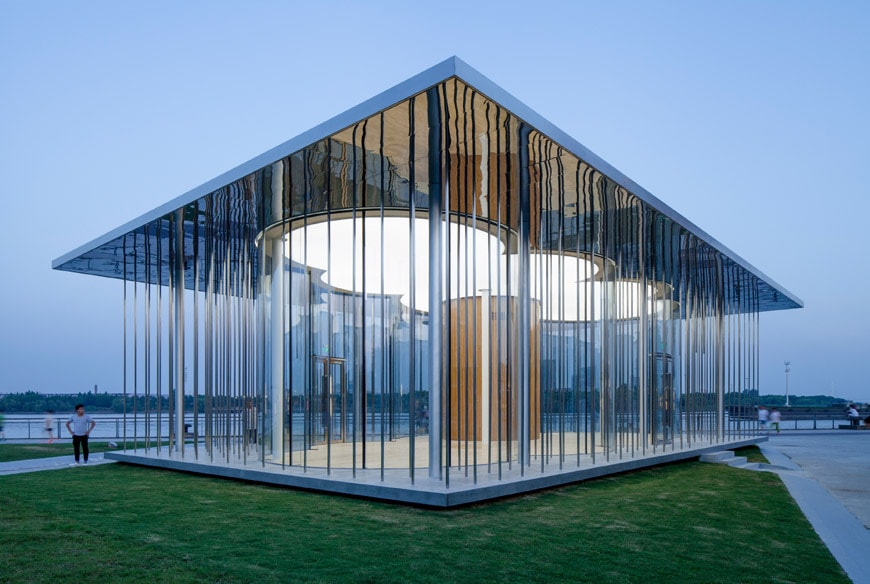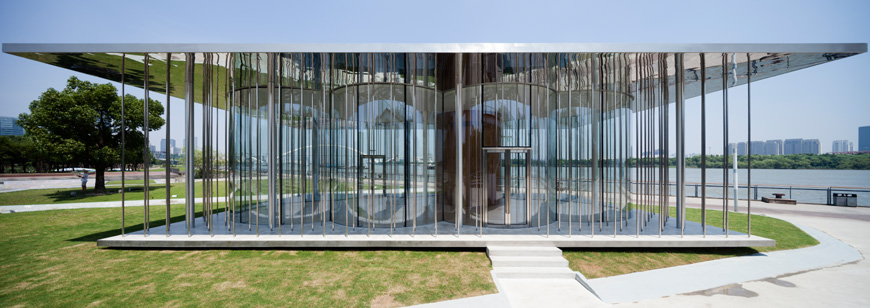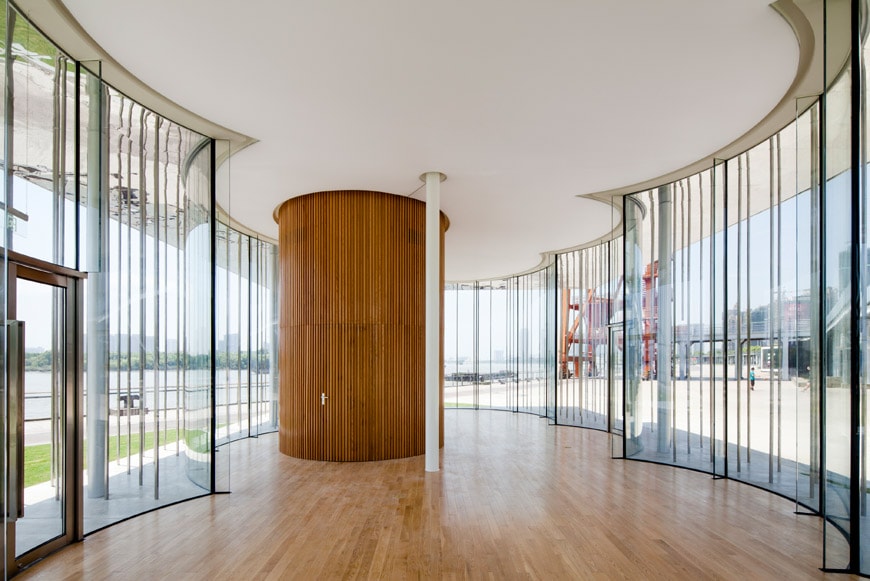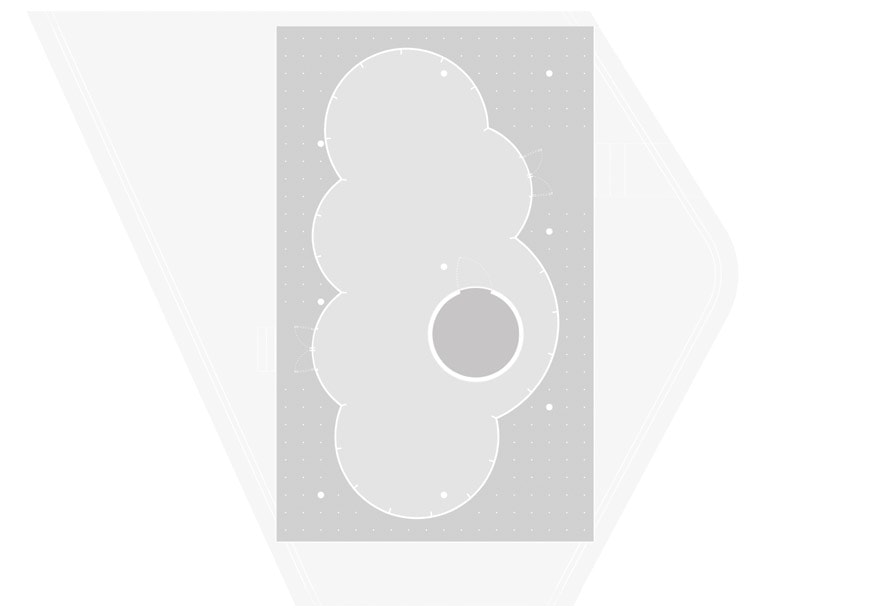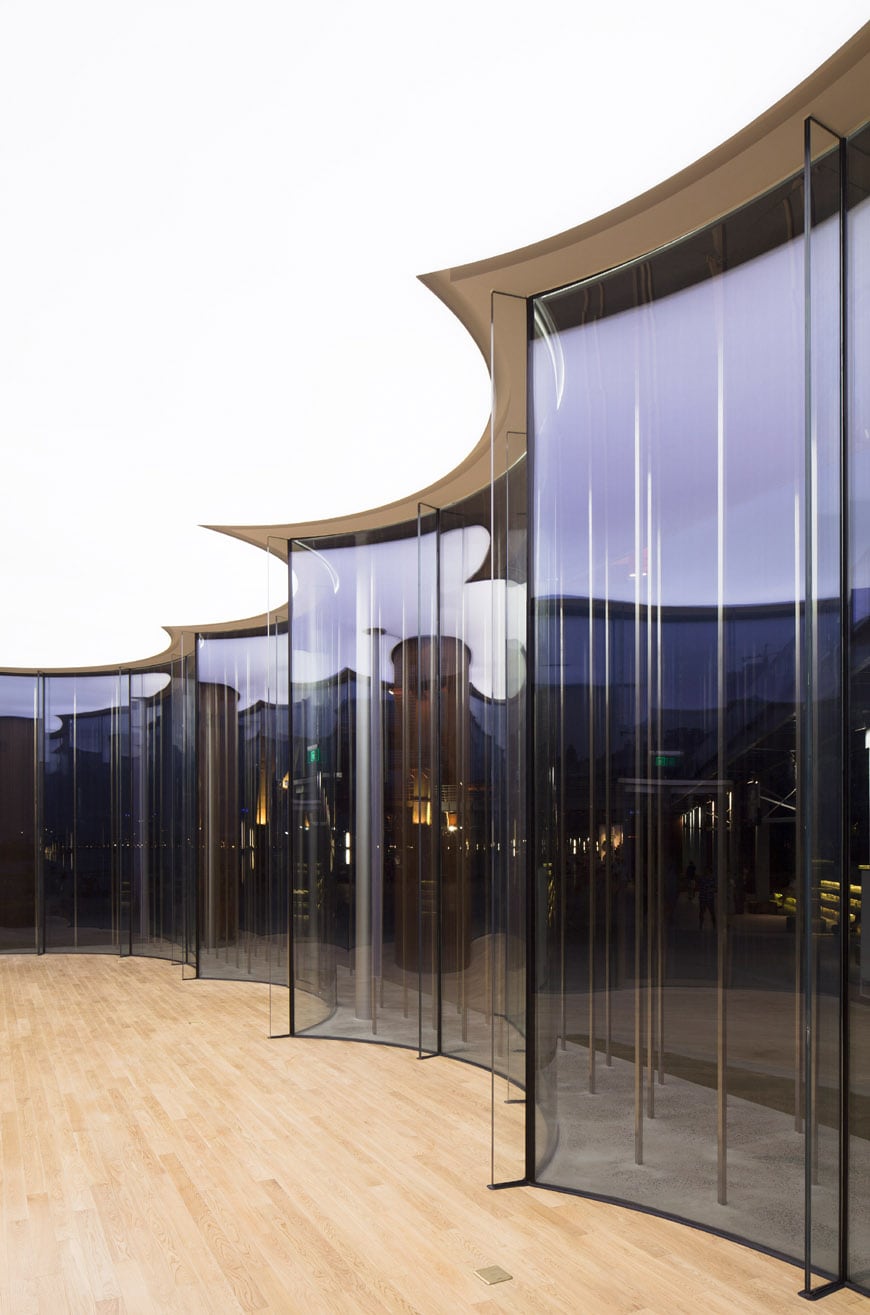The new ‘Cloud Pavilion’ by Schmidt Hammer Lassen Architects
West Bund Development Corporation
Architect: Schmidt Hammer Lassen Architects
Local architect: Tongji Architectural Design Institute
Photos by Peter Dixie
The new “Cloud Pavilion” in Shanghai by Schmidt Hammer Lassen Architects
It’s rare that a temporary venue, conceived to last only a few months for a specific event, will evolve into a commission for a permanent building; yet, sometimes it happens.
This is the case of the recently completed pavilion designed by Denmark’s Schmidt Hammer Lassen architects on the Huangpu riverfront in Shanghai.
Schmidt Hammer Lassen Architects, Cloud Pavilion, 2016, elevation.
Schmidt Hammer Lassen Architects complete an exhibition pavilion on the banks of the Huangpu River in Shanghai
(text by Schmidt Hammer Lassen architects)
In 2013, Schmidt Hammer Lassen Architects (SHL) were commissioned by West Bund to create a series of pavilions as part of the West Bund Biennale of Art & Architecture, curated by Chinese architect Zhang Yonghe, and architecture professor and curator Li Xiangning.
The Cloud Pavilion was an ephemeral pavilion consisting of two white surfaces and 20,000 pieces of white rope. Intended as a counterpoint to the heavy industrial cranes on the waterfront and as a place for contemplation and rest along the Huangpu River, the pavilion was designed to last for the 2-month duration of the Biennale. Due to the success of the pavilion, it remained in place for over 2 years.
The ephemeral Cloud Pavilion, 2013. Courtesy of Schmidt Hammer Lassen Architects.
The new Cloud Pavilion
In 2015, the West Bund commissioned SHL to redesign the pavilion as a permanent space for art and events.
The project brief was to maintain the steel structure of the original pavilion, create a minimum of 100 m² space for events and small exhibitions, provide a small kitchen with storage, and maintain the original notion from the Biennale pavilion of a ‘cloud’.
Chris Hardie, design partner at Schmidt Hammer Lassen states, “The new pavilion creates a singular space in the form of an extruded glass cloud. In plan, the cloud shape directly relates to the cartoon-like form associated with how a child would draw a cloud, and how clouds are often seen depicted in traditional Chinese prints. The cloud is considered a symbol of luck in ancient Chinese painting. At night the ceiling is illuminated against a reflective mirrored surface giving the illusion of an abstract floating cloud along the riverfront, and acts as a marker for citizens to meet and rest.”
Schmidt Hammer Lassen Architects, Cloud Pavilion, 2016, exterior views. Photos: Peter Dixie
Facts
Client: West Bund Development Corporation
Architect: Schmidt Hammer Lassen Architects
Local architect: Tongji Architectural Design Institute
Area:150 m2
Construction: May to July 2016
Visualisations: Schmidt Hammer Lassen
Photography: Peter Dixie
Schmidt Hammer Lassen Architects, Cloud Pavilion, 2016, interior view. Photo: Peter Dixie
Schmidt Hammer Lassen Architects, Cloud Pavilion, 2016, plan.
Schmidt Hammer Lassen Architects, Cloud Pavilion, 2016, interior view. Photo: Peter Dixie
Schmidt Hammer Lassen Architects, Cloud Pavilion, 2016, exterior view. Photo: Peter Dixie
The Cloud Pavilion is just one of many projects currently being designed by Schmidt Hammer Lassen architects along the Huang Pu River in Shanghai. The studio is working together with the Dream Center to develop a new 1800-seat Broadway Musical Theatre, a 300-seat live music venue within a former industrial dome structure, and the conversion of a cement factory warehouse into a creative Art & Design Hub. In addition, the office is also working on the design of a new 25,000m² district Performance Arts Centre for the Xuhui district government, and the new Headquarters for the Shanghai Development Bank as part of the Green Valley development at the former Expo site.
copyright Inexhibit 2024 - ISSN: 2283-5474

